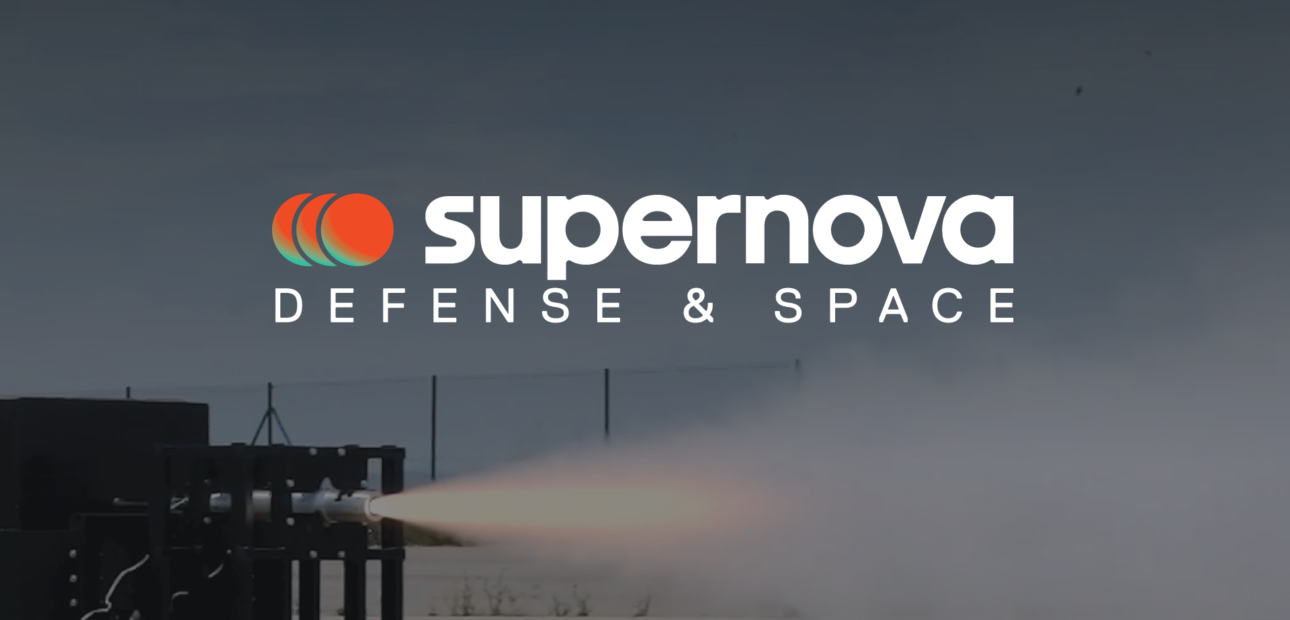
- Supernova Defense & Space is a new business unit that will focus on developing a proprietary Additive Manufacturing (AM) ecosystem for energetic materials.
- Viscous Lithography Manufacturing (VLM) is the first AM technology that has successfully proven its potential for processing military-grade materials such as APCP or RDX.
- Target applications include Solid Rocket Motors (SRM’s) which are a critical component for the next generation Hypersonic platforms.
August 14th, Austin, TX – Today, rising Additive Manufacturing (AM) leader Supernova is announcing Supernova Defense & Space, a business unit pioneering 3D printing of energetic materials. This innovation aims to overcome the limitations of traditional manufacturing processes and enhance the capabilities of produced components, striving for technological superiority in critical applications like Solid Rocket Motors (SRM’s), which play a pivotal role in the development of hypersonic platforms.
Supernova’s proprietary technology, Viscous Lithography Manufacturing (VLM), is a lithography-based AM process that uses a transparent film to transfer high viscosity materials onto a build platform, where they are cured by light to form 3D printed parts. Unlike conventional processes which require low viscosity resins, VLM can handle materials with up to 100 times higher viscosity, that benefit from longer oligomer chains in the formulations, resulting in superior mechanical properties
Energetic materials are compounds capable of rapidly releasing significant amounts of energy through chemical reactions, commonly used in propellants and explosives. Military-grade formulations, such as APCP (Ammonium Perchlorate Composite Propellant) and RDX (Cyclotrimethylene trinitramine), are highly effective and reliable. However, traditional processing techniques, ranging from casting to extrusion, impose severe geometric limitations, hindering the effective technological advancement of certain components.
One of the key strengths of AM is the geometric freedom it offers. However, military-grade formulations often have solid loads exceeding 80%, making them unsuitable for processing with AM technologies. Supernova’s VLM has successfully demonstrated the ability to process formulations with more than 88% solid load, overcoming this significant limitation to unleash the power of AM and create the next generation of military-grade components. The main value propositions that the process offers are:
- High-energy density based on a superior solid-load.
- Stable and homogeneous component properties: starting from a uniform particle dispersion, with isotropic layers, and ensuring the absence of air gaps.
- Geometry freedom in the component design.
- Rapid Prototyping to accelerate development.
- On-demand and On-shore production.
The initial applications identified to benefit from these value propositions include Solid Rocket Motors (SRMs), where the goal is to enhance combustion efficiency and develop custom thrust profiles; explosives, aiming to increase detonation performance in application-specific designs such as shaped charges; and bullet grains, with the objective of achieving higher velocity and reducing weight.
“Supernova Defense & Space represents our commitment to pushing the boundaries of what’s possible to manufacture.” said Roger Antunez, Founder and CEO at Supernova “By pioneering 3D printing of energetic materials, we’re not just advancing technology—we’re providing the tools to the engineers to innovate and reshape the future of defense and space industries.”
Based on these breakthrough achievements, Supernova is announcing its long-term initiative, Supernova Defense & Space—a business unit dedicated to expanding the boundaries of manufacturing technologies for the defense and space industries, with an initial focus on military-grade energetic materials.
About
Supernova is an innovative AM company offering solutions to produce end-use-parts at scale and cost based on its proprietary Viscous Lithography Manufacturing (VLM) technology.
Media contact
marketing@supernova3d.com
